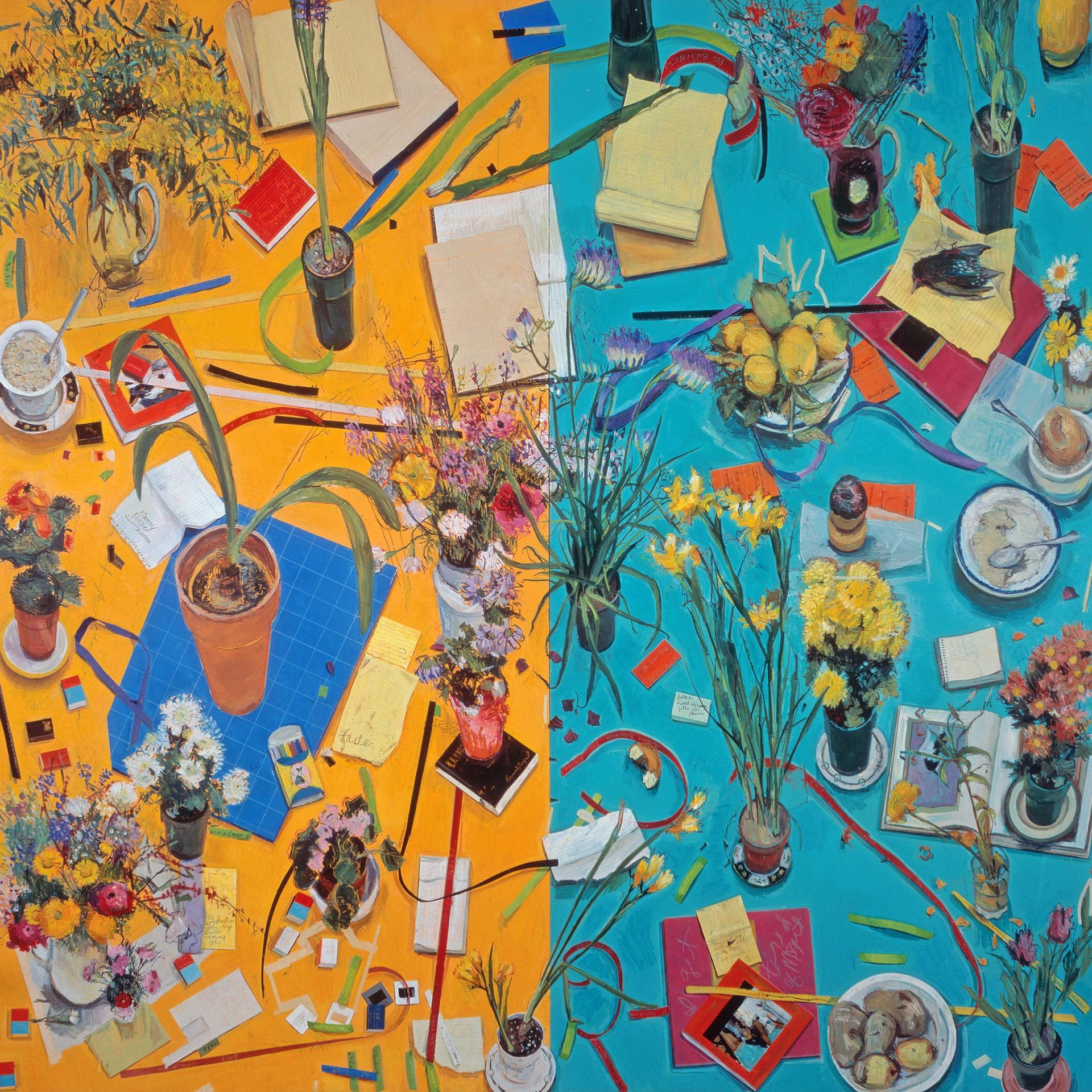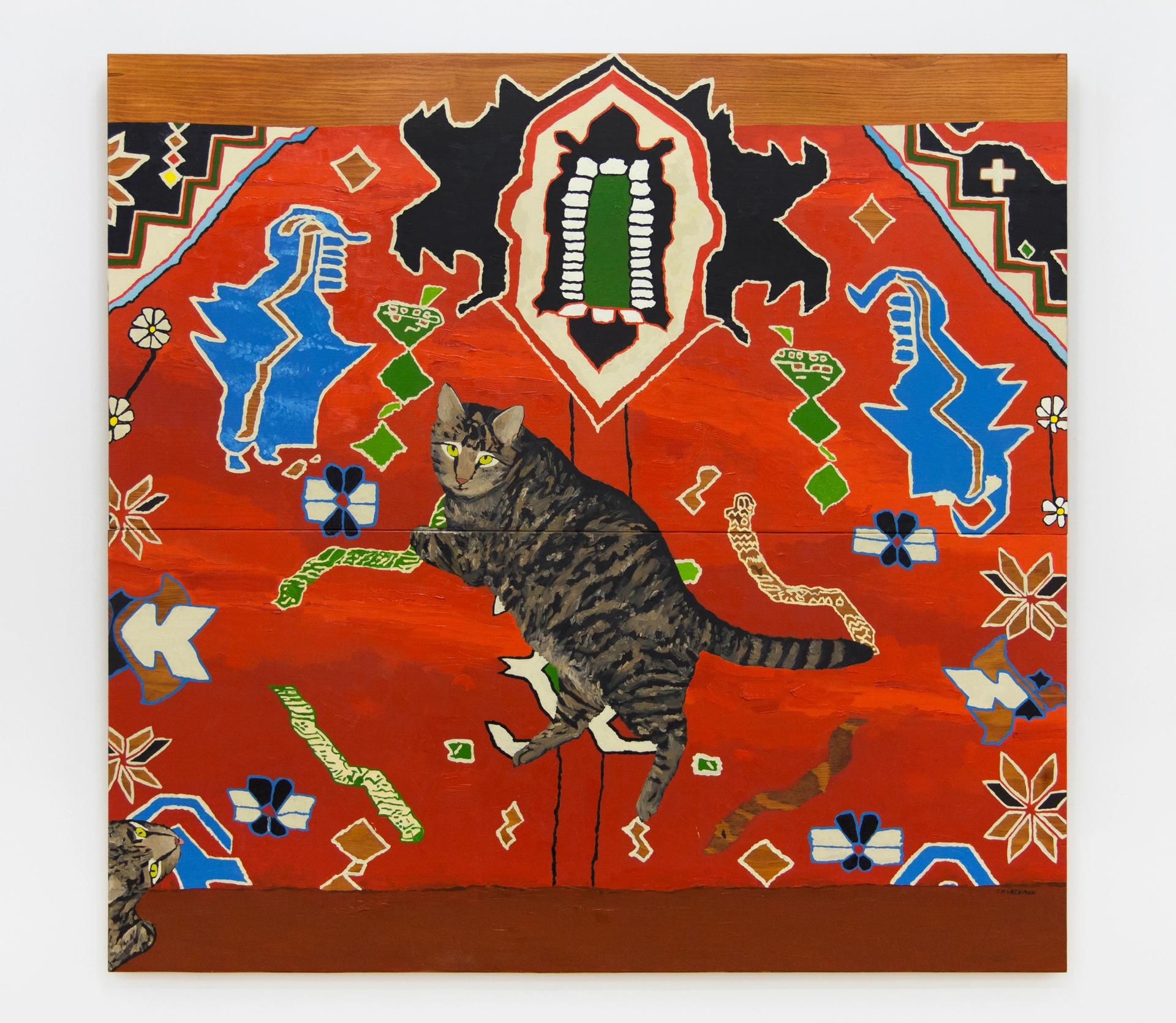It has to be difficult organising an exhibition for a museum that abruptly terminated your job. But Helen Molesworth, who was the chief curator of the Museum of Contemporary Art in Los Angeles until March this year, also faced another challenge with her final show at the museum, One Day at a Time: Manny Farber and Termite Art (14 October-11 March 2019): defining what exactly “termite art” is.
For this hybrid show—partly a monograph on the late painter Manny Farber, who in 1962 wrote the underground essay White Elephant Art vs Termite Art, and partly a group show of such termite-tending artists—Molesworth grappled with the meaning of her chosen theme so much that she ends up discussing that in the exhibition catalogue. When she first shared the idea with colleagues, “people would look at me blankly and I would just mumble, defeated, ‘The show is basically about still life,’” she writes in a rare display of curatorial self-doubt.

Manny Farber, Domestic Movies (1985) Res Med collection
So what has she figured out since then? For starters, Farber was not a huge help, as he mainly defined termite art by its opposite. It is not, he wrote, art that strives to be a masterpiece, where “the painting, sculpture, assemblage becomes a yawning production of overripe technique shrieking with preciosity, fame, ambition”. Or, a bit more concrete, Farber describes it is as something that “goes always forward eating its own boundaries, and, likely as not, leaves nothing in its path other than the signs of eager, industrious, unkempt activity”.
In her own writing, Molesworth does some of this definition-by-negation too, handily eviscerating at one point the “frictionless finish fetish of Jeff Koons, the narcissistic grandiosity of Damien Hirst, or the production of charm without affect by Takashi Murakami”. But she also tries to define termite art with reference to her interests in “décor and the decorative and decorum”, women’s domestic labour like “arranging and repairing and knitting”, moments that seem “trivial and futile”, busy kitchen counters and vases of flowers that somehow seem real, no vanitas symbols allowed.
“In a nutshell,” Molesworth writes in her most direct attempt at a summary, “[termite art] can perhaps be described as artwork that dives deep into—and is fascinated by—banal or minute details, arriving at that subject matter which might otherwise be typically overlooked. Termite art recedes from master narratives and big statements. Termite art valorizes the eccentric pursuit of the quotidian.”

Leidy Churchman, Chuck (2010) Collection of David Madee
The show itself also describes the phenomenon by example, with one of the most telling choices beyond Farber being Wolfgang Tillmans and his diaristic photos of half-eaten meals and cluttered desks or tables. Another section of the exhibition, plainly titled People in Rooms, includes humble-powerful paintings by Joan Brown and Aliza Nisenbaum of women resting or, depending on your take, preparing for action. Another on “landscape” features labour-intensive, process- and pattern-obsessed works by Vija Celmins, Jennifer Guidi, and Sylvia Plimack Mangold.
The show also nods to the oddly comic rhythms of daily life with a selection of Fischli & Weiss’s Suddenly This Overview (1981-2010): some 20 small unfired clay vignettes like one of Einstein’s parents asleep in bed. After all, what could be more ordinary than a couple sleeping, even if they are on the verge of creating a genius?


